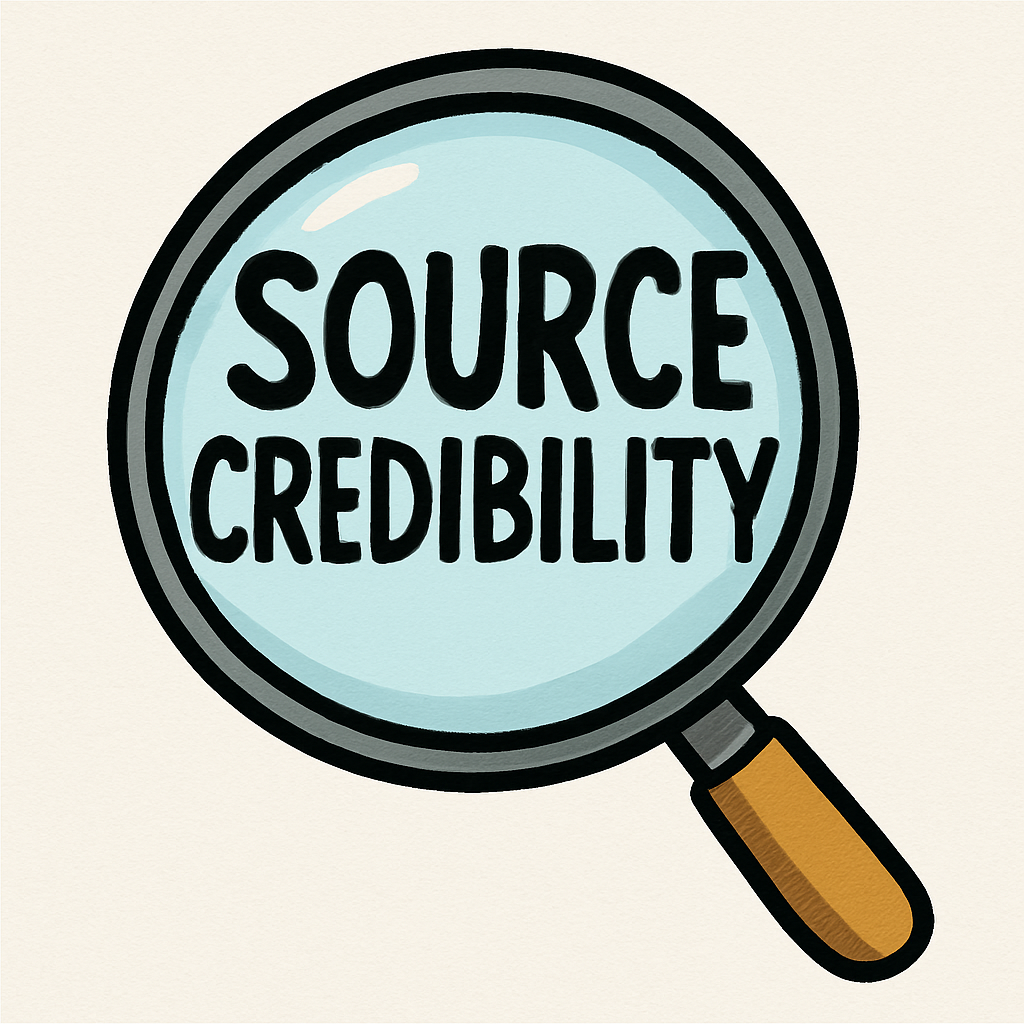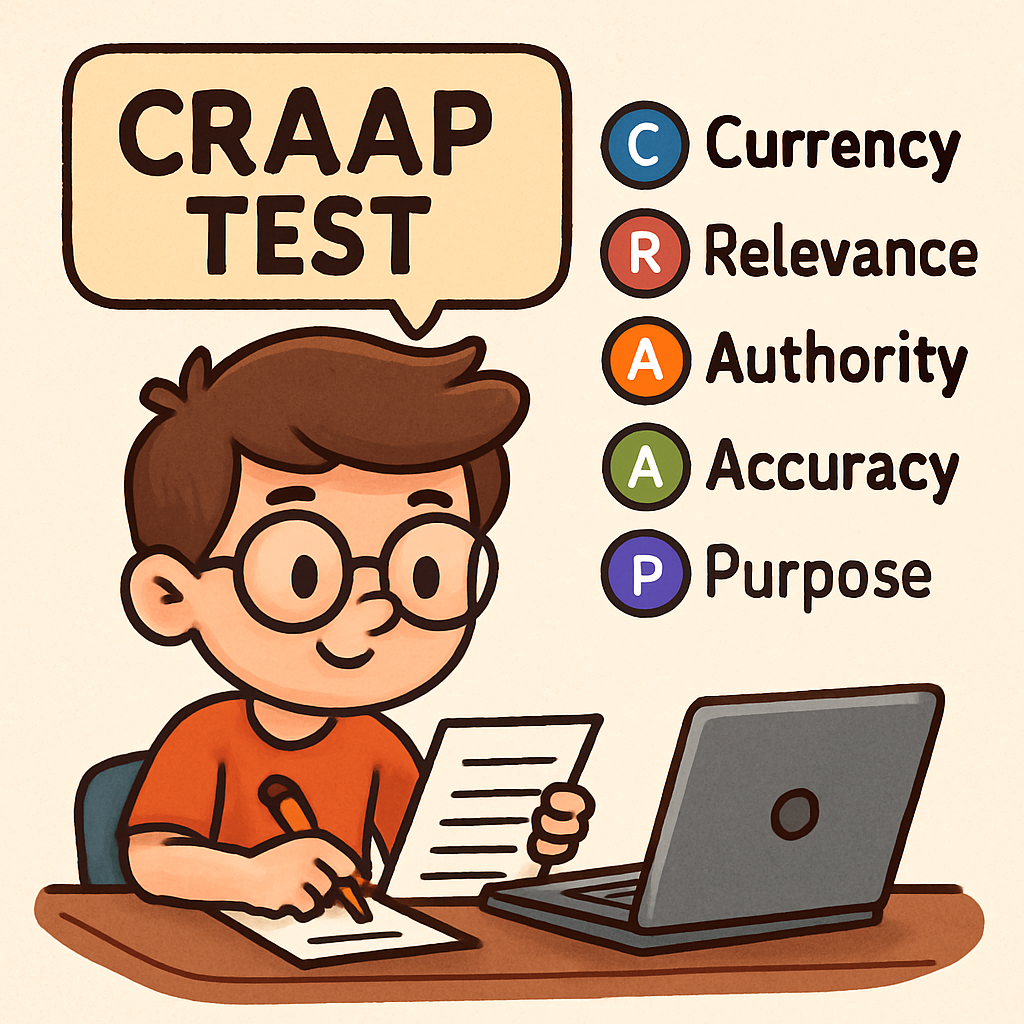 What is Source Credibility?
What is Source Credibility?
In this lesson, you will learn how to assess whether information found online is trustworthy. Source credibility involves determining if the information originates from a reliable and dependable source. This process is similar to verifying whether a statement from a friend is truthful or fabricated.
It is essential to understand source credibility because the internet contains a vast amount of information, not all of which is accurate or reliable. Relying on untrustworthy sources may result in accepting incorrect facts, making poor decisions, or unintentionally spreading misinformation. By developing skills to evaluate sources effectively, you will enhance your abilities as a responsible digital citizen.
To further illustrate, consider the following key points:
 Introduction to the CRAAP Test
Introduction to the CRAAP TestIn this step, you will explore a structured method known as the CRAAP Test, which is designed to assist in evaluating the credibility of online sources. The acronym CRAAP represents five key criteria: Currency, Relevance, Authority, Accuracy, and Purpose. By applying these criteria systematically, you can determine whether a source is reliable and suitable for your research needs.
Understanding and using the CRAAP Test is an essential skill for navigating the vast amount of information available on the internet. It enables you to distinguish between trustworthy content and potentially misleading material. Below is a detailed explanation of each criterion, accompanied by examples to illustrate their application.
 Evaluating Sources Using the CRAAP Test
Evaluating Sources Using the CRAAP Test
In this activity, you'll practise evaluating the credibility of information using the CRAAP Test — a method used to assess the quality of a source based on five key criteria. The topic for this exercise is 'The Benefits of Exercise for Teens'. You will compare two different sources and rate them based on the CRAAP criteria.
CRAAP stands for:
Use the table below to rate each source on a scale from 1 (poor) to 5 (excellent) for every CRAAP criterion. You can copy this table into your notebook or recreate a digital version:
| Criterion | Source 1 Rating | Source 2 Rating |
|---|---|---|
| Currency | ||
| Relevance | ||
| Authority | ||
| Accuracy | ||
| Purpose |
Complete the CRAAP Test ratings for both sources. After rating them, decide which one is more credible overall. Write a brief paragraph explaining your choice and the reasons behind it. Use the CRAAP criteria in your explanation. Complete this work in your notebook or a digital document.
Allocate approximately 10 minutes for this activity.

When evaluating online information, it is important to look for certain warning signs, often referred to as 'red flags'. These indicators suggest that a source may not be trustworthy or reliable. Recognising these red flags can help you avoid misinformation and make better decisions about the content you use or share.
Below is a list of common red flags to watch for, along with explanations of why they are problematic:
To practise identifying these red flags, consider the following short article snippets:
"BREAKING: Scientists say eating nothing but bananas can make you 10x smarter! Click now to unlock the truth!!""Posted by DailyNutritionTips2021 – Did you know that drinking only water for a week can cure all illnesses? It's a hidden secret that doctors don't want you to know!""According to my cousin, who works in tech, smartphones are spying on us through our toasters. Stay alert!"
"A viral TikTok trend reveals a ‘miracle hack’ to make your phone charge in 5 seconds—no charger needed!"
"An anonymous forum user claims that a top-secret government program is turning students into AI hybrids through school Wi-Fi."
 Distinguishing Real from Fake Headlines
Distinguishing Real from Fake Headlines
In this step, you will practise evaluating the credibility of news headlines by determining whether they are real or fake. This exercise builds on the CRAAP Test and the red flags you have learned about earlier in the lesson. Headlines can sometimes be sensational or misleading to attract attention, so it is important to assess them critically using criteria such as authority, accuracy, and purpose. By doing this, you will improve your ability to identify trustworthy information online.
Below is a list of five headlines. Some are based on real events or reports from credible sources, while others are fabricated or exaggerated. For each one, consider factors like whether the claim seems outrageous, if it comes from a reputable organisation, or if it uses emotional language that might indicate bias or unreliability.
Reflect on how your answers compare. If any of your justifications differed, think about why and note any new insights in your notebook.